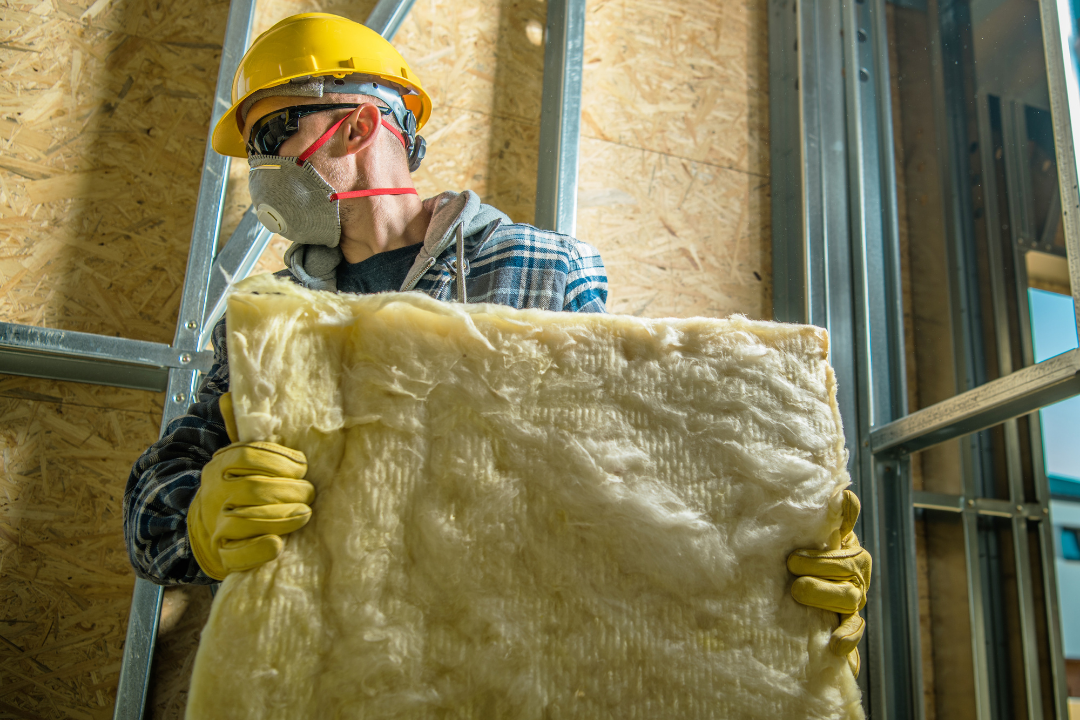
Faced vs Unfaced Insulation: Which One?
When it comes to insulating your attic, one of the first decisions you’ll face is whether to use faced or unfaced insulation. It may sound like a small detail, but choosing the right type plays a major role in how well your home retains heat, controls moisture, and meets local building codes. So let’s break down faced vs unfaced insulation—what they are, how they differ, and which one is right for your attic.
What Is Faced Insulation?
Faced insulation has a paper or foil vapor barrier (called a “facing”) attached to one side of the insulation material, typically fiberglass batts or rolls. This facing acts as a moisture barrier, helping to prevent water vapor from passing through and settling inside your walls or attic structure.
The facing is usually made from kraft paper, foil, or plastic, and it often doubles as a fastening surface for easier installation. Because of its built-in vapor barrier, faced insulation is typically installed with the facing side directed toward the heated interior of the home.
What Is Unfaced Insulation?
As the name suggests, unfaced insulation has no attached vapor barrier. It’s just the insulation material by itself—usually fiberglass, mineral wool, or cellulose. Without the facing, this type of insulation is ideal for adding extra thermal resistance (R-value) in spaces where moisture control is already handled by other components like house wrap or vapor retarders.
Unfaced insulation is often used in attics when additional layers are installed over existing insulation, or when code doesn’t require a vapor barrier.
Key Differences Between Faced and Unfaced Insulation
Understanding the difference between faced and unfaced insulation can help you make the best choice for your specific attic needs. Here’s a quick comparison:
| Feature | Faced Insulation | Unfaced Insulation |
| Includes Vapor Barrier | Yes (paper, foil, or plastic) | No |
| Common Use | First layer against living space | Additional layers or already sealed areas |
| Ease of Installation | Easier due to facing used as staple tab | Slightly harder, no attachment surface |
| Building Code Compliance | Often required in exterior-facing spaces | Used where vapor control isn’t needed |
When to Use Faced or Unfaced Insulation in Your Attic
The choice between faced or unfaced insulation in attic projects depends on several factors—most notably your climate, attic layout, and moisture control needs.
Use Faced Insulation When:
- You’re installing insulation for the first time in an unfinished attic.
- Moisture control is a concern (especially in humid regions).
- The insulation layer will be directly against an interior living space.
- Local building codes require a vapor barrier.
In most attic installations, especially in cold or mixed climates, faced insulation is installed with the paper side facing down—toward the inside of your home. This helps prevent indoor moisture from migrating into the attic where it can condense and cause mold or rot.
Use Unfaced Insulation When:
- You’re adding a second layer of insulation over existing batts.
- The attic already has a vapor barrier or proper ventilation.
- You’re insulating areas that don’t require moisture control.
- Local codes do not require a facing.
Layering unfaced insulation over faced batts can improve overall R-value without risking trapped moisture, which is critical for long-term performance.
Building Code Considerations
Building codes often dictate whether you need faced or unfaced insulation in specific areas. In many regions, codes require a vapor retarder on the warm-in-winter side of exterior walls and ceilings. That means faced insulation may be required for attic floors in colder climates.
However, using faced insulation in multiple layers or facing the wrong direction can trap moisture, leading to mildew, wood rot, and energy inefficiency. That’s why it’s essential to follow your local building codes or consult with a licensed contractor familiar with regional standards.
For more information, check your area’s specific codes or refer to the International Residential Code (IRC) for general guidelines.
Fire Ratings and Safety
One detail that often goes overlooked is fire resistance. The paper facing on faced insulation can be flammable if exposed. That’s why it should never be left uncovered in living areas or spaces where a fire rating is required. In unfinished attics or crawl spaces that are accessible, building codes might require fire-rated coverings like drywall over faced insulation.
Unfaced insulation does not carry the same fire concerns, making it safer in exposed applications—but you still need to consider the fire rating of the insulation material itself.
Real-World Scenarios: What Homeowners Typically Do
Let’s say you’re insulating an unfinished attic with no existing insulation. In this case, you’d likely start with faced batts between joists to get both thermal and vapor protection. If you decide to improve your insulation later, you could add a second layer of unfaced batts perpendicular to the first to boost your R-value without moisture risk.
Alternatively, if you’re working on a sealed attic with a vapor retarder already in place (like foam insulation or house wrap), you may not need the facing at all. Adding unfaced batts would do the trick and keep your home cozy and efficient.
So, Which Should You Use?
If you’re deciding between faced vs unfaced insulation for your attic, here’s a quick takeaway:
- Go with faced insulation if this is your first layer, especially in colder climates or if your attic is vented and moisture could be a concern.
- Use unfaced insulation for layering or in spaces that already have proper vapor barriers and ventilation.
Getting the right insulation setup is about more than material—it’s about placement, purpose, and local climate needs.
Make the Right Choice for Your Home
Still unsure about which insulation type fits your attic project? Don’t guess. Reach out to a trusted insulation expert in your area who can assess your attic, understand your climate zone, and recommend the right solution. You can also check reliable resources like Energy Star to guide your next steps.
Making an informed decision now helps ensure your attic performs year-round—so start your insulation upgrade with confidence today.
Ready for a free consultation? Book with AtticNerds today for a free consultation!
